Arseni Khachaturan envisions a new 'Beginning'
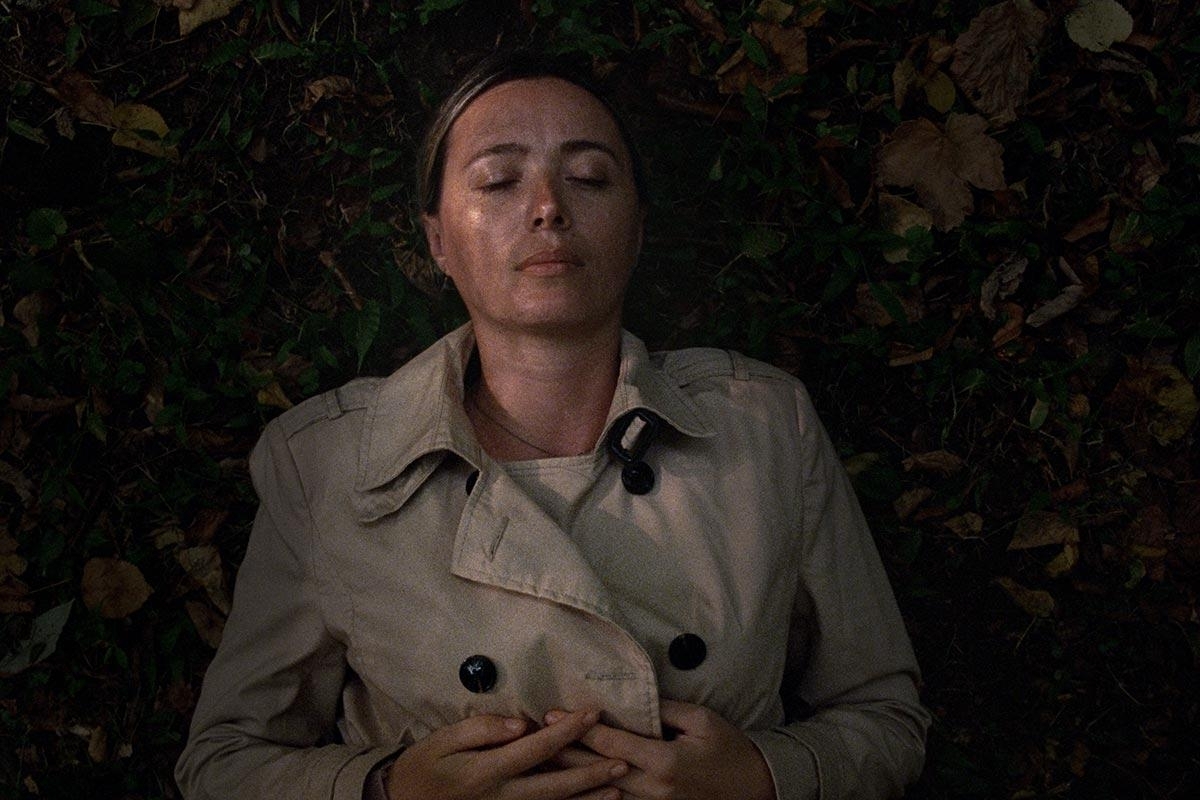
Every single element of the film serves the essence of the story and creates a frame in which characters such as Yana (Ia Sukhitashvili) can live. Courtesy of First Picture and Arseni Khachaturan.
For her feature directorial debut Beginning, which was co-written with Rati Oneli, Georgian filmmaker Dea Kulumbegashvili has won the FIPRESCI Prize at the 45th Toronto International Film Festival and dominated the 2020 San Sebastián International Film Festival by being lauded with the Golden Seashell Award for Best Picture, Jury Prize for Best Screenplay, and Silver Seashell Awards for Best Director and Best Actress (Ia Sukhitashvili). The allegorical drama revolves around a Jehovah Witness missionary (Ia Sukhitashvili) seeking justice in a remote Georgian village as a hate crime resulted in her place of worship being burned down. Hired to be the cinematographer was Arseni Khachaturan who previously worked with Kulumbegashvili on her short film Lethe (2016).
“Dea offered me to be a cinematographer on her film back in 2015, and from then on, I have been involved in the process,” explains Khachaturan. “We started to work together even though the script was an early draft. This was definitely the longest time I have spent working on a film and I am so thankful for it. By previously collaborating together on Lethe [2016], which was shot on 35mm, DOUBLE-X 5222, it allowed us to learn each other’s process. For Beginning, we did extensive location scouts on multiple trips I took to Georgia.” An unconventional approach was adopted which involved shooting with a single lens and relying mostly on lightbulbs. “For Dea, the priority on set was to allow for something to happen in front of the camera that would go beyond what we had planned. Yet, we had to be thoroughly and meticulously prepared to allow for the actors to take their time and to inhabit their space, to make it fully their own.”
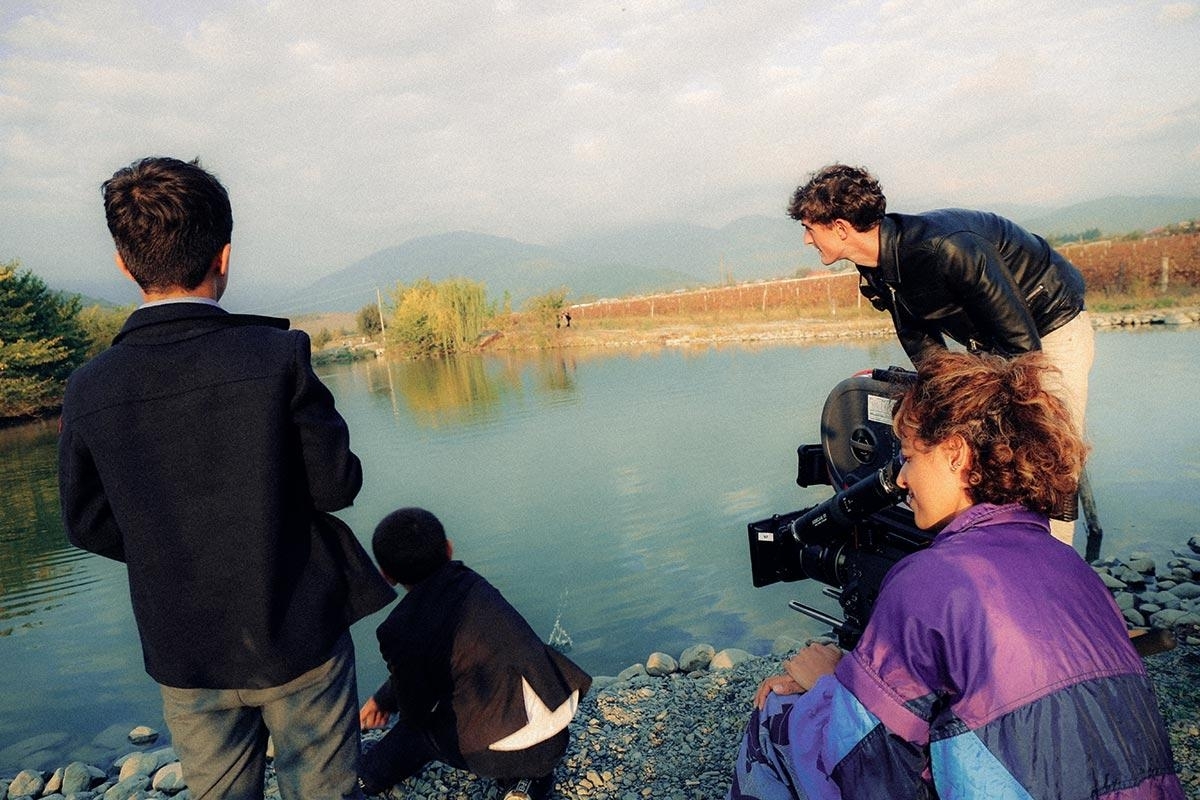
Arseni Khachaturan on the right, Dea Kulumbegashvili looking into the camera, Saba Gogichaishvili (who plays Giorgi) on the left. Courtesy of First Picture and Arseni Khachaturan.
The final film was almost identical to what was shot listed and storyboarded. “We talked a lot; went to museums in New York, Paris, and Amsterdam; listened to music; watched films; and exchanged books,” states Khachaturan. “Dea doesn’t use any specific images or films as direct influences on what she wants to create; she pursues emotions through a thorough and insightful exchange about the essence of each shot. The most inspiring aspect was my presence on location. We went through many spaces and spent a lot of time with people who live in the town where the film was shot. We needed to look at how people lived and sought images that would represent everyday life. I was also present during the casting. I wanted to see how actors moved. I asked to observe this part of the process as well in order to understand what Dea was after.”
Film was always the medium of choice. “From a practical standpoint, shooting on film works perfectly with the way Dea works,” notes Khachaturan. “There is always a predetermined number of shots in her films that are timed strictly. She does not shoot coverage or cutaways which forces discipline and focus within the crew. Creatively speaking, shooting on film is always magical. So far, I have been blessed to shoot most feature films and shorts on film. There are certain things you can’t achieve with digital no matter how much you manipulate it. Richness of colors, the way celluloid treats people’s faces, and the texture of the image and the depth of it. A sensual and tactile experience is only offered with celluloid. All of these aspects were important for Beginning.”
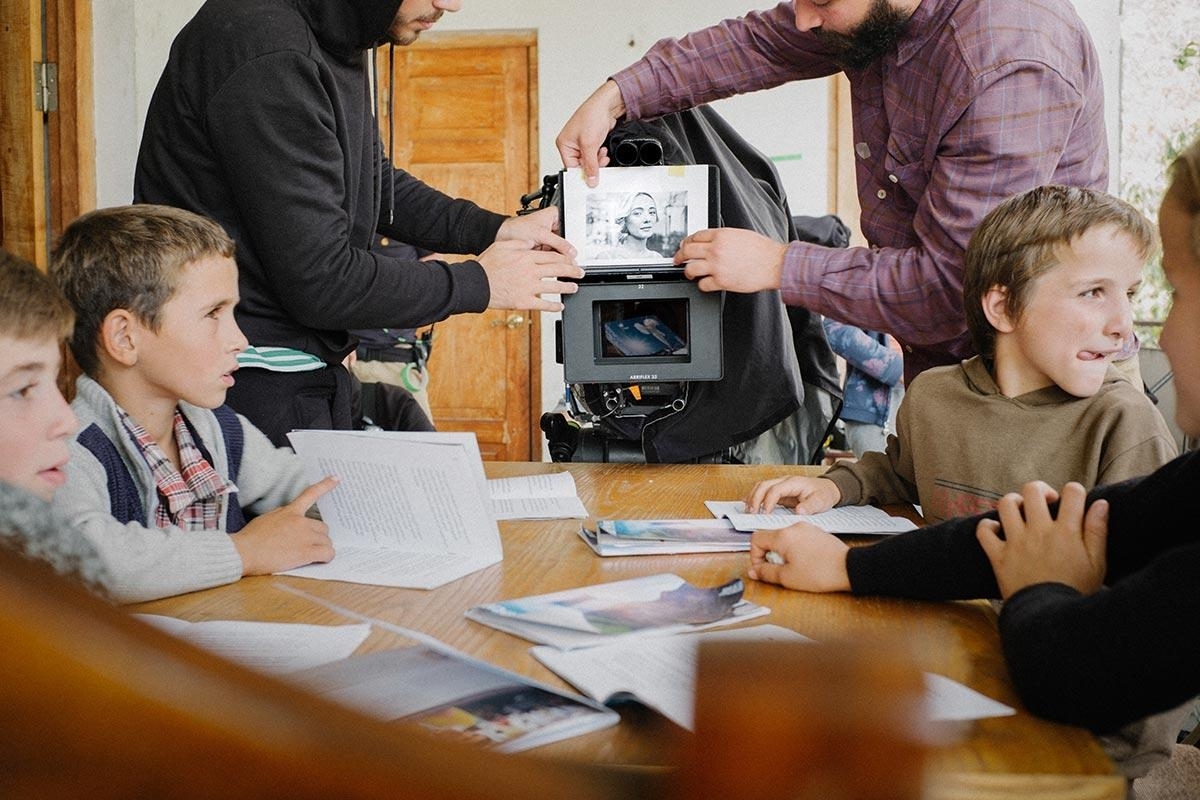
On the set of Beginning. Courtesy of First Picture and Arseni Khachaturan.
Various 35mm film stocks were extensively tested by pushing and pulling them with the preferred one being KODAK VISION3 500T Color Negative Film 5219. “Kodak 500T 5219 presents a vibrant color palette, renders skin tones beautifully. It’s fast enough for night exteriors, which we shot using only street lighting, and it holds daytime exteriors with grace,” notes Khachaturan. “The dynamic range is unbeatable, and it was very important considering the broad range of night/day exteriors and our minimalistic approach to lighting. It was important for us to maintain consistent grain structure throughout the film too. We shot the majority of it normally, exposing a little under to get richer contrast and blacks, and pushed +1 for night scenes. We shot 4-perf for the chosen 4:3 aspect ratio.”
There was no need for coverage and cutaways as most of the scenes play out as single long takes. “We did not have the possibility to have many takes because many actors in the film are non-professional actors,” remarks Khachaturan. “Additionally, some of the scenes with exclusively professional actors were so emotionally and physically demanding that we could only have a take or two, with little to no safety net. As for the shot list, we focused on the essence of the scenes/shots. In other words, on the core of a particular moment, and what that moment was about.” Preproduction for the crew began in early summer 2019 with principal photography lasting 34 days from September to October of 2019. Two days of pre-shoot took place in August 2019 because of changing weather conditions. “The entire film was shot on location in and around the town of Lagodekhi in Georgia.”
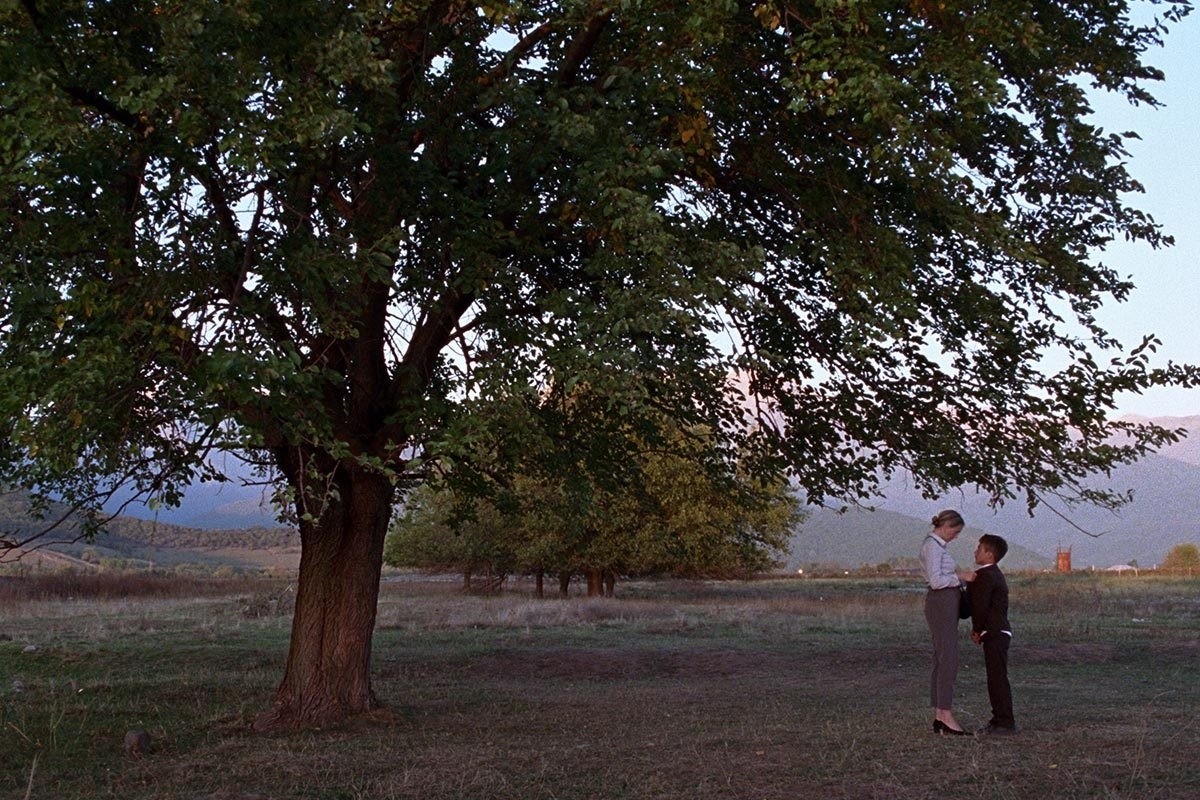
The entire film was shot on location in and around the town of Lagodekhi, Georgia where filmmaker Dea Kulumbegashvili grew-up. Courtesy of First Picture and Arseni Khachaturan.
Kulumbegashvili was well-acquainted with the setting of the production as she grew up in Lagodekhi. “We focused on finding locations that would allow for the minimal, natural look of the film to come through,” states Khachaturan. “The film predominantly happens in the house, the one where our protagonist Yana [Ia Sukhitashvili] and her family live. It was crucial to find a house where we could imagine this family living. We asked Ia to walk through the rooms, to see how she would inhabit the space. We were also looking for overbearing high ceilings; a house where Yana would look fragile and lost. After weeks and weeks, we found it, almost by accident. The Prayer House had to be built from scratch to later be burned to the ground. This scene starts early in the evening and continues until night falls, so the position of the sun, geography, landscape orientation, mountain range surrounding the area, and safety had to come together. The one we ended up choosing worked out perfectly.”
ARRI Munich and Georgian Film Studio supplied Arricam ST and Arri 435 Xtreme 4-perf cameras. The camera is locked on sticks for the majority of the film, with only a few panoramas,” remarks Khachaturan. “Every time the camera starts moving it has a great impact, so it only moves for a reason.” A catalog of lenses was created and presented to Kulumbegashvili. “In the end, she decided to shoot on one lens – Cooke 5i 25mm. Cooke 5i really stood out in terms of how much volume and three dimensionality it brought to portraits. It is very luminous, sharpness was just right, it has beautiful focus falloff, and is fast enough to shoot at night in the street. Every single element of the film is there to serve the essence of the story, to deepen it, and to create a frame in which characters can live. The aspect ratio, the lens choice, and every other choice is a part of the fabric of the film and all have to marry and work together.”
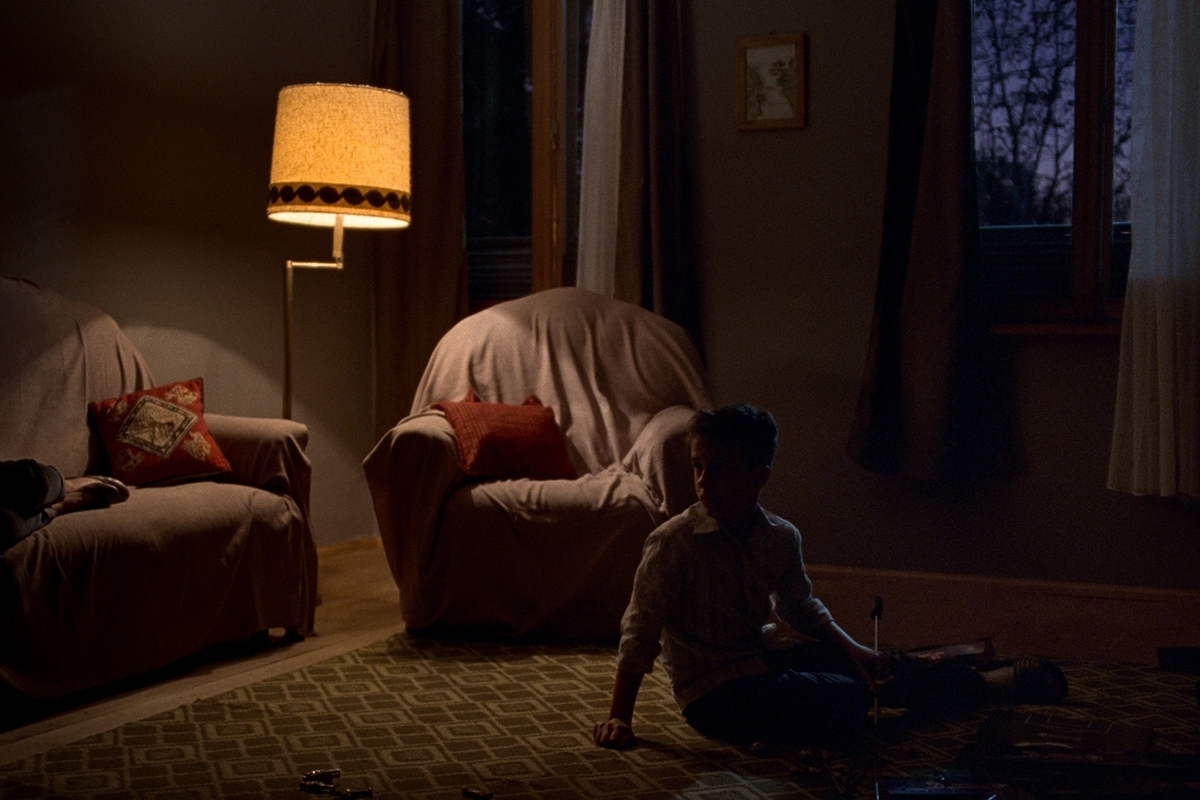
Saba Gogichaishvili (Giorgi) on the floor and lit by practical lightbulbs. Courtesy of First Picture and Arseni Khachaturan.
A raw textural quality was desired for the lighting. “My gaffer Sergey Borsuk and I went out shopping for the strangest lights one can buy in hardware stores,” states Khachaturan. “We had LED consumer projectors with all kinds of dirty color shifts into green, blue, or magenta. We had over 50 light bulbs, from 2000K to 6500K. Sergey and our key grip made a couple of rigs out of those: sodium vapor lamps, fluorescent, halogen, and incandescent. All of them had codenames that we invented. Most of the interiors were lit with only one lightbulb. Actors could move freely in the rooms. We pre-lit the exteriors before production even started. We would bring in a cherry picker and adjust streetlights at our locations, add, or remove based on what we see in the shot. On top of that there were two SkyPanels S60 in the truck, two Source Four Lekos, two ARRI 575s, couple Blondes and two mirrors that we used working with direct sunlight. Production brought in an ARRI 6K light for some night exteriors when we needed to cover a larger area.”
“The beauty of shooting on film is that images come out of the lab already looking fantastic,” observes Khachaturan. “We didn’t change the colors in DI much after all. It was rather about contrast and working with dynamic keyframes and curves. There is an overhead shot of the main actress laying on the ground in the forest and it’s around five minutes long. That’s all that happens in that shot but I had to make 43 dynamic keyframes for it. All the light comes through tree leaves and sun goes in and out. Everything in that frame is in constant movement. Tracking down those light changes, dividing those detailed patterns and countering them was quite interesting. There are few shots in the film that happen right at the exact moment when sun drops behind the horizon, and everything regarding lighting and colors changes immediately, within the shot. I had to think about color within time for the majority of it. Most of the shots are done this way.”
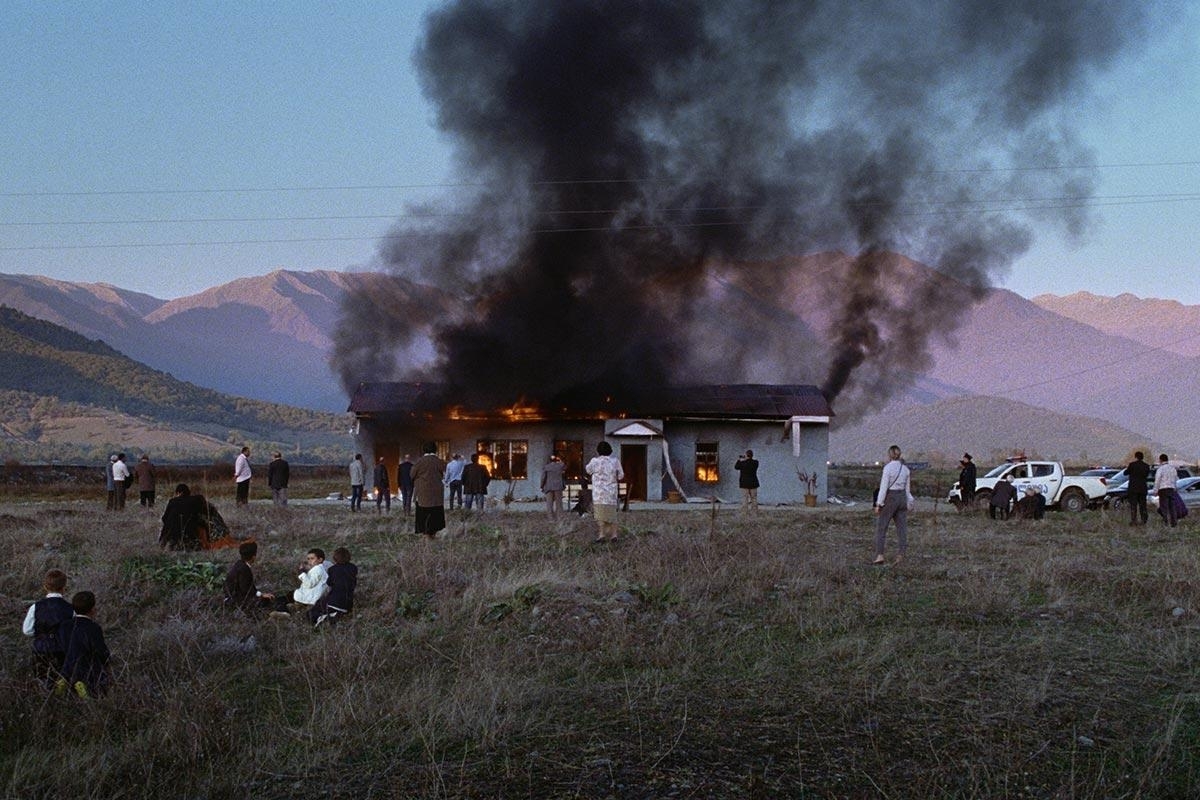
The inciting incident is the burning of the Prayer House which had to be built from scratch by the production. Courtesy of First Picture and Arseni Khachaturan.
Key crew members featured two camera assistants from Paris, Simon Maignan and Anouk Stiegler. “I’ve been working with Anouk and Simon on celluloid for a few years now, back from when we all lived in New York,” remarks Khachaturan. “My gaffer, Sergey Borsuk was invaluable for the film and joined us early in the process. The Georgian crew was amazing and with a small crew we had and people coming from all over the world, we were all like one family.” WFDiF in Warsaw, Poland developed and scanned the dailies. “They did stellar work and provided quick turnaround for dailies which we pulled from their servers weekly. Scanning was done in 4K.” Grading was done by colorist Ernie Schaeffer at Splendor Omnia studios in Mexico. “We graded the film in Davinci Resolve on a Dolby monitor and visual effects were done by Detachment East in Mexico.” The New York City-based and Belarus-born cinematographer is reluctant to reveal his favorite shot or sequence. “I do not want to spoil anything but am certainly looking forward to people seeing the film.”